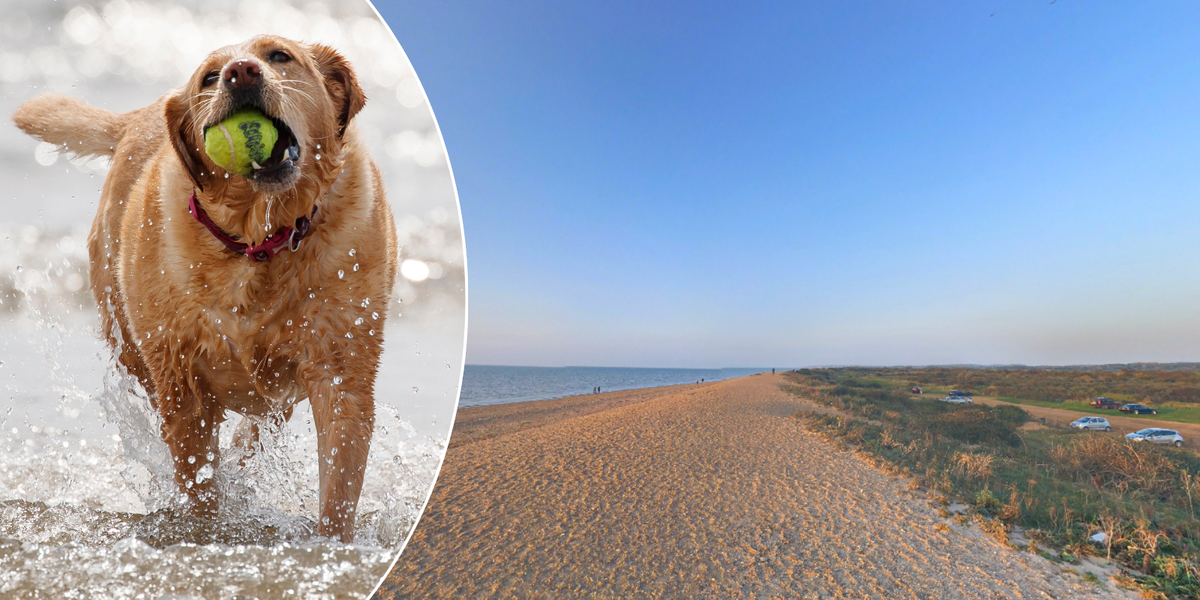Dogs and Coastal Erosion: A Controversial Proposal in Norfolk
As summer approaches, the picturesque beaches of Norfolk are typically filled with families, sunbathers, and dog walkers enjoying the sun and surf. However, a growing concern among local councils has sparked a heated debate: should dogs be banned from English beaches to protect coastal ecosystems? This question has emerged in light of recent findings that suggest canine activities may be contributing to coastal erosion, particularly along a vulnerable stretch of beach between Hunstanton and Snettisham.
The Coastal Challenge
The beaches of west Norfolk are not just recreational spaces; they serve as critical coastal defenses for thousands of homes. The shingle ridge that runs along this seven-mile stretch is vital for protecting properties from flooding and erosion caused by tidal surges. Unfortunately, this natural barrier is under threat, and dogs have been singled out as a significant factor in its degradation.
Local councils, backed by the Environment Agency (EA), have raised alarms about the impact of both human and canine activities on the shingle ridge. Reports indicate that dogs are digging into the ridge, which compromises its structural integrity and increases the risk of erosion. As a result, councillors are considering measures to restrict access to this area, particularly for dog walkers.
The Role of the Environment Agency
The Environment Agency has been closely monitoring the situation, emphasizing the need for protective measures along the coastline. Their assessments have highlighted that human activities, including walking and dog play, are exacerbating the erosion of the shingle ridge. EA officials have urged local authorities to take action to safeguard the shoreline, which is crucial for preventing flooding in the surrounding communities.
In addition to the concerns about dog walkers, the EA has also been investigating property owners in nearby Heacham who have allegedly been digging into the ridge to enhance their views of the Wash. This further complicates the issue, as it raises questions about responsible land use and the collective impact of human activity on the coastal environment.
Councillors Take a Stand
In response to these findings, West Norfolk councillors have convened to discuss the future of the beach and the potential for implementing a ban on dogs. Sandra Squire, the council’s cabinet member for environment and coastal affairs, has been vocal about the need for responsible behavior among beachgoers. She stated, "We need to encourage people to avoid walking and damaging the shingle ridge. This should also include dogs, as people often allow their dogs to dig into the ridge. This is also damaging—and people need to be responsible for their own actions."
To further protect the shingle ridge, the council is considering erecting signs along the beach to inform visitors about the importance of preserving this natural barrier. The aim is to foster a sense of responsibility among beachgoers and discourage activities that could lead to further erosion.
A Mixed Picture
Interestingly, despite the push for restrictions, the Environment Agency’s latest report indicates that the shingle ridge is currently in good condition and has been growing naturally. This finding suggests that while human and canine activities pose risks, the ridge has the resilience to withstand some level of disturbance. However, EA officials remain cautious and believe that discouraging walkers—especially those with dogs—could help protect the vegetation that plays a crucial role in maintaining the ridge’s structure.
The report also revealed that a "trigger point" had been reached, meaning that the EA would not need to invest £5-8 million in "beach recharge" costs, which would involve importing materials to bolster the coastal defenses. This is a significant financial relief, but it underscores the importance of ongoing vigilance and proactive measures to ensure the long-term health of the coastline.
Conclusion: Balancing Recreation and Conservation
The debate over banning dogs from Norfolk’s beaches highlights a broader conversation about the balance between recreation and environmental conservation. While dogs are beloved companions for many beachgoers, their impact on fragile ecosystems cannot be overlooked. As local councils and environmental agencies work together to protect coastal areas, it is essential for the community to engage in responsible practices that safeguard these natural resources.
Ultimately, the future of Norfolk’s beaches may depend on finding a harmonious solution that allows for enjoyment of the coastline while ensuring its preservation for generations to come. As discussions continue, it remains to be seen how local authorities will navigate this complex issue and what measures will be implemented to protect the shingle ridge and the homes it safeguards.
